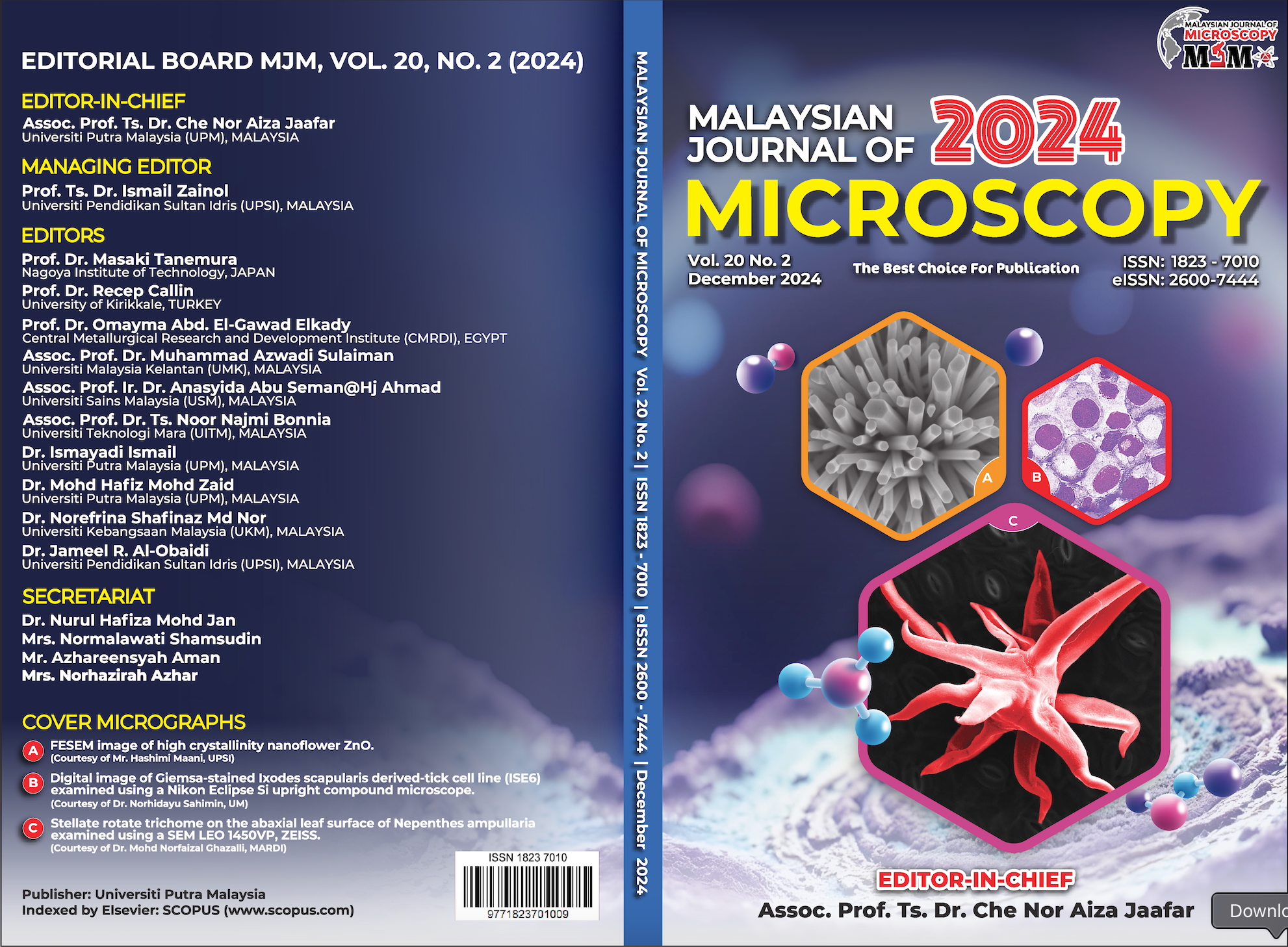VARIATION IN CALCINATION TEMPERATURE OF COCKLE SHELL-DERIVED CALCIUM OXIDE FOR BIOMEDICAL APPLICATIONS
Abstract
Cockle shells are abundantly thrown alongside the beach, contaminating the environment with their smelly surroundings. The waste is collected and chemically derived into a material that could be useful for biomedical applications. Cockle shells contained 95-99 % by weight of CaCO3, which enables the CaCO3 to serve as a precursor to produce calcium oxide (CaO), primarily intended for biomedical applications. The CaCO3 powder was subjected to the calcination process at temperatures of 800 °C, 850 °C and 900 °C, resulting in the conversion to CaO. The choice of these calcination temperatures was determined to be suitable for producing CaO powder for biomedical use. A notable correlation was noted between the structural characteristics of calcined CaO and the calcination temperatures. The scanning electron microscope (SEM) analysis shows that all calcined cockle shells have smooth surfaces and irregular shape particles. Fourier transform infrared spectroscopy (FTIR) analysis verifies the appearance of absorption band at a wavenumber of 711 cm-1 indicating the presence of CaO. Energy dispersive x-ray (EDX) spectroscopy result showed the compositional outcome are Ca and O at all temperatures after calcination. Specifically, cockle shells calcined at 900 ˚C exhibited a greater quantity of CaO compared to those calcined at 800 ˚C and 850 ˚C. Hence, 900 ˚C appears to represent the optimal calcination temperature for cockle shells. This study will not only contribute to the effective utilization of a valuable waste resource of cockle shells that can be found in Malaysia but also offer insights into the suitability of the chosen calcination temperatures for the intended biomedical applications.


